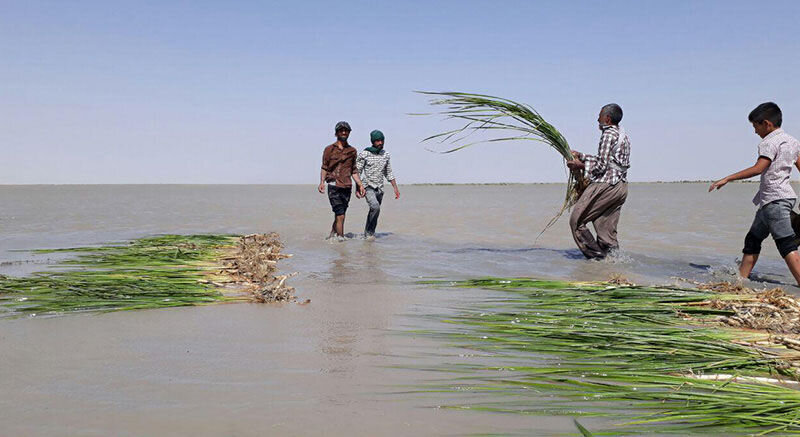Over 10 new species discovered in Hamoun International Wetland

TEHRAN – In recent years, according to a study by researchers at Zabol University, more than 10 new species of arthropods have been identified in Hamoun International Wetland.
Centralized studies by researchers at Zabol University have been started since five years ago, to examine the world’s seventh-largest international wetland and Iran's largest freshwater lake in the plains of the Sistan region, with a focus on the subgroup of Hymenoptera, Ali Afshari Moghaddam, the university’s public relations head, said on Saturday.
In this study, several species were identified, named and introduced, so that tens of other rare species have been collected in this region and their existence has been recorded for the first time in Iran, he added.
He went on to say that Hamoun International Wetland is a dynamic and fertile habitat that plays an important role in the survival of animal species, especially arthropods, as a biological reserve in the animal food chain.
So far, more than 20 articles have been written by Zabul University researchers on new species of Hamoun International Wetland that have been published in prestigious international journals, he highlighted.
In recent years, the lack of precipitation and drought caused by dried up Helmand River along with the 120-day winds in the Sistan region, in addition to causing great economic and social damage, has led to the complete drying up of Hamoon Wetland and its ecosystem, he lamented.
One of the most important criteria for granting international importance to a wetland by the Ramsar Convention is having a significant collection of rare or endangered species or subspecies of rare plants and animals, he also emphasized.
He concluded that citing researches conducted by Zabul University, in the first stage can provide reasonable evidence to the international authorities regarding the double emphasis on the importance of protecting the habitat and allocating its water rights by Afghanistan.
Hamouns are transboundary wetlands on the Iran-Afghan border made up of three lakes: Hamoun-e Helmand, which is entirely in Iran, Hamoun-e Sabari on the border, and Hamoun-e Puzak, almost entirely inside Afghanistan. The three lakes are linked and fed by water from the Helmand River which starts in the Hindu Kush Mountains in Afghanistan.
In the last two decades, once fertile wetlands have drastically dried up. The Taliban government closed the sluices to the Kajaki Dam on the Helmand until 2002, which aggravated the impact of the worst drought the region has experienced in many decades, brought about partially by climate change and warming temperatures.
FB/MG

Leave a Comment